English
run the cursor over pics to see caption and click on them to view them full size
Français
passez la souris sur les photos pour voir la légende et cliquez dessus pour les voir en grand
|
English run the cursor over pics to see caption and click on them to view them full size |
|
Français passez la souris sur les photos pour voir la légende et cliquez dessus pour les voir en grand |
| wait for the pictures to load before clicking on them (or reload page) - attendez le chargement complet des images avant de cliquer dessus (ou réactualisez) |
|
Our first ruins in Mexico... Probably the most famous, best restored Mayan site of the Yucatan Peninsula: Chichén Itzá (pronounced "tchitchen itza"). About 30 miles west of Valladolid, admission €8 (well spent, the site is rather extraordinary, and climbing the Castillo is quite something). According to historians, Chichén Itzá was once a pure Mayan site, abandoned in the 9th century, then resettled in the late 10th before being invaded by Toltecs (Toltecs came from the north of Mexico City), which results in the site having become a fusion of Mayan and Toltec heritage. You can see images of both Quetzalcóatl (the plumed serpent, Kukulcán in Mayan) and Chac-Mool, the Mayan rain god. El Castillo (the pyramid) is the only structure you're allowed to climb and enter, you wanna see more? follow the guide... |
Chichén Itzá - part 1 |
Notre première visite de ruines au Mexique: Chichén Itzá, à une quarantaine de kilomètres à l'ouest de Valladolid, un site magnifique, le plus célèbre et l'un des mieux restaurés de la péninsule Yucatan (entrée 8€, ça vaut la peine, entre autres pour escalader la pyramide El Castillo). Un site scrictement Maya à l'origine, Chichén Itzá fut abandonné au 9e siècle pour des raisons encore inconnues, puis ré-investi à la fin du 10e siècle, avant d'être envahi par les Toltecs. Aujourd'hui, le site présente donc un mélange d'architecture et de symboles Maya et Toltecs (une population qui venait du nord de Mexico city). On peut y voir par exemple des représentations du dieu CHac-Mool (dieu de la pluie) ainsi que de Quetzalcóatl (le serpent à plumes, Kukulcán en Maya). Aujourd'hui, le seul édifice que l'on est autorisés à escalader (de l'intérieur comme de l'extérieur ) et El Castillo (la grande pyramide). Suivez le guide! |
||
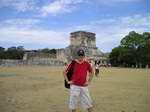 |
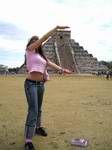 |
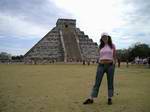 |
||
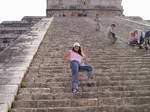 |
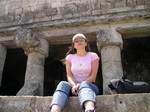 |
|||
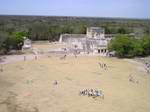 |
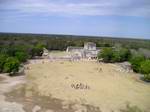 |
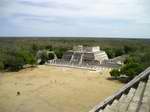 |
||
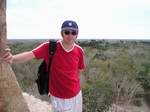 |
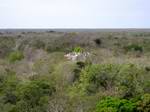 |
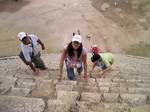 |
||
Gran Juego de Pelota - well, the ancestor of the football stadium... and here's a LUFC fan who's wearing the wrong colour t-shirt...
we just had to do it! - on n'a pas pu résister!
the great pyramid at Chichen Itza - El Castillo, probably one of the most famous postcards of Mexico (well if I wasn't on it that is)
there are 91 steps to climb to the top on all four sides of the pyramid, added to the top platform that's a total of 365 to represent the number of days in a year
each step is about 40-45cm high, and it's around 40° in the midday sun, so when you reach the top, it's nice to sit down and contemplate the vistas
El Gran Juego de Pelota - there seems to be historical evidence that the players of the time played a soccer-like game with a hard rubber ball, the use of hands forbidden
... so really, this is a football stadium!! and in Toltec times, it also seems that the captain of the losing team and perhaps his teammates, were sacrificed... so they also invented ritual hooliganism!
El Templo de los Guerreros - part of el Grupo de las Mil Columnas which obviously takes its name from the forest of pillars on its east and south side
Paul, round to the other side of the pyramid
El Osario (ossuary) - or the Bone-house or the Tumba del Gran Sacerdote
you climb it down like you would a ladder, as it is so steep!
©KarenWeb2005
music: The Mysterious cities of Gold - thanks to 80sNostalgia.com